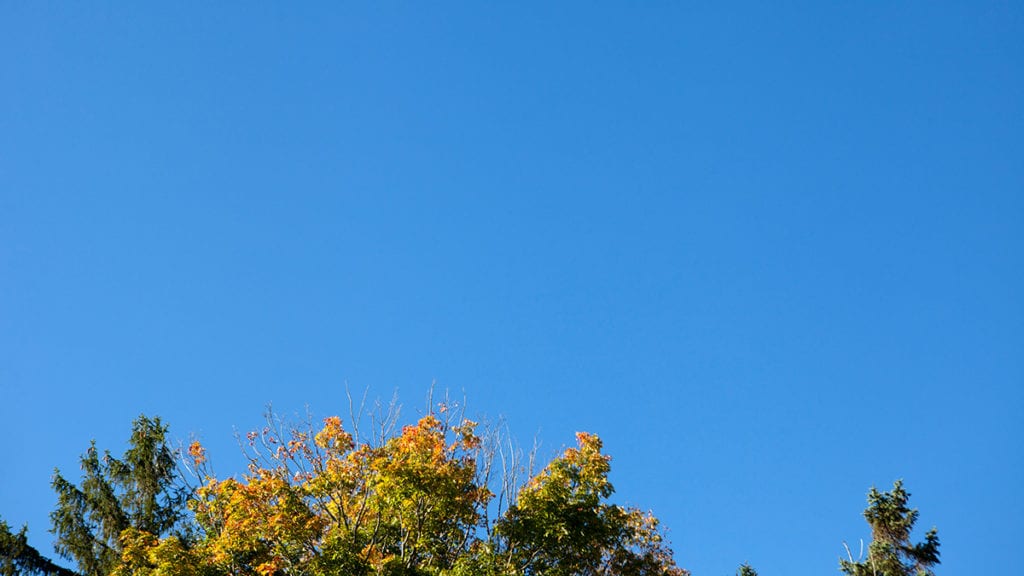
I love October — the clear air, the bright leaves, and the deep blue sky. While appreciating the rich colors on a recent walk, I wondered, “Is the sky actually a deeper shade of blue in fall?” Thanks to physics, I was able to dig around and find the answer — which is “yes!”
Two light scattering phenomena — Rayleigh Scattering and Mie Scattering — account for the change in the sky color.
Rayleigh scattering refers to the scattering of light off molecules in the air. Clean air scatters blue light (shorter wavelengths) more than red and other colors of the spectrum, so we see the sky as blue. As the sun gets lower to the horizon, Rayleigh scattering directs “more blue light towards your eyes, while the indirect sunlight decreases the incoming levels of red and green — the result of which is a more intense blue sky.”
In the fall, the humidity levels drop off as the temperatures go down, and there is less moisture in the air. This means less Mie scattering, which scatters all wavelengths equally. As a result, more blue light reaches us. Fewer clouds and haze allow more blue to be visible (this phenomenon is also why clouds appear white).
Here is a cool video on the effect:
The changing color of the leaves also adds to the effect. With orange, red, and yellow complementary colors against the clear sky, the contrast heightens our perception of blue.
This becomes one more beautiful detail to note in the rhythm of Maine’s seasons!
